Mitti Ke Rang
“Mitti Ke Rang” is a restaurant located in Ahmedabad, Gujarat, India designed by Snehal Suthar and Bhadri Suthar of tHE gRID Architects.
tHE gRID is an architecture firm based in Ahmedabad, Gujarat, India. Established about 15 years back, and headed by Snehal Suthar and Bhadri Suthar, tHE gRID Architects is a multidisciplinary design firm which incorporates an array of design combinations and experiences, qualification and skills and deeply committed to excellence. Snehal has done his Masters in sustainability and Bhadri is an Interior designer from APIED Vidyanagar Gujarat. They have set a mandate for contextual design, something that is timeless. Therefore, their designs are founded in simplicity and clarity, and create structures that are closely connected to the earth.
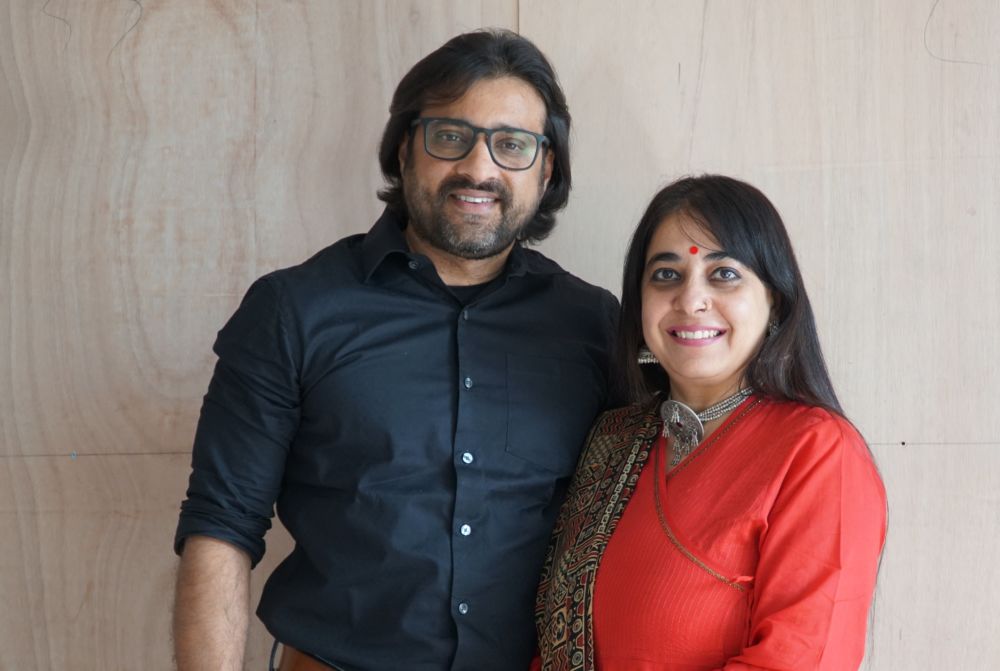
Their latest project is a restaurant named Mitti Ke Rang, located in Ahmedabad, Gujarat, India. The project facilitates the basic human need of socializing in an ambiance that respects the earth. With the use of local organic materials — especially clay — local craft and labor, it is an attempt on the architects’ part to acknowledge the consumerism of today’s world, and in a small way, contribute to minimizing the waste generated by prevalent urban attitudes and lifestyles.
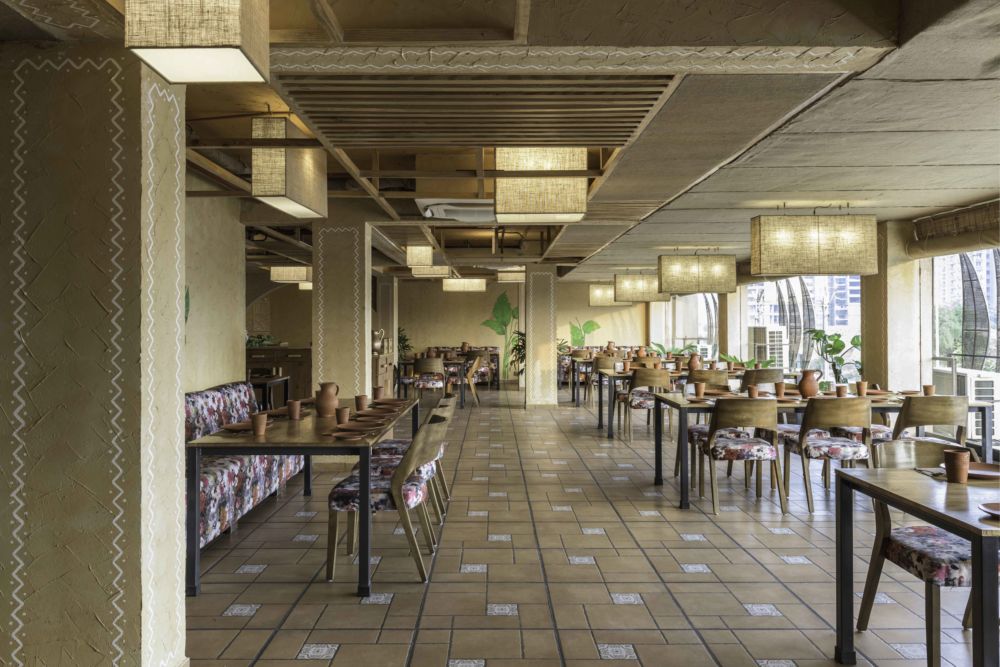
By a wonderful coincidence, the respectfulness towards resources and earth-energies that are the founding principles of The Grid Architects’ practice converged with the owners’ family links to pottery, and its inextricable connections to the earth.
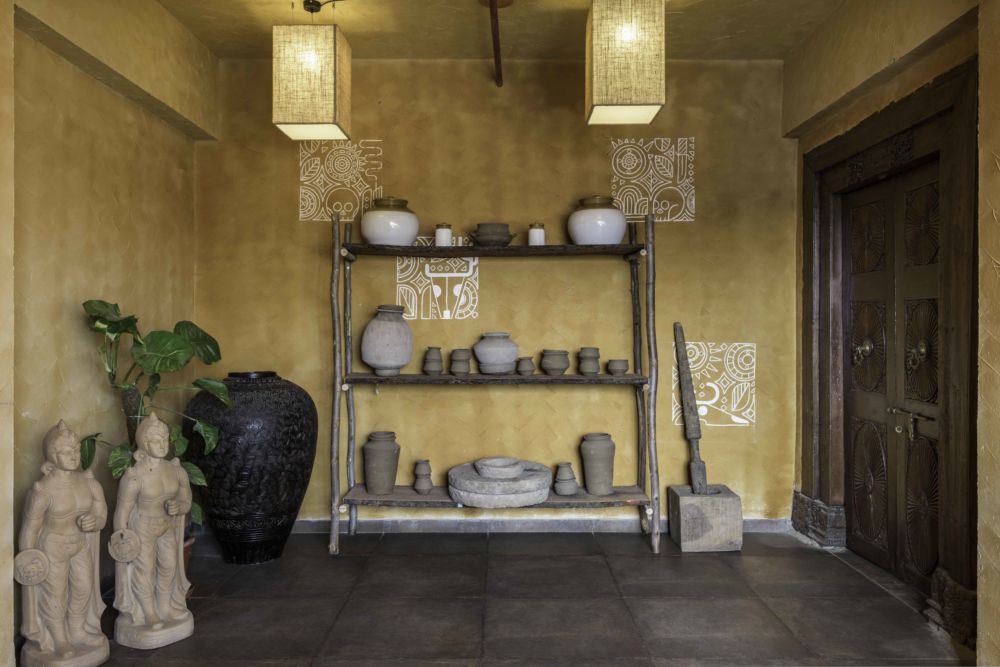
The attempt, then, became to build up this connection, heritage, and talent in the new venture. “We told the client to let his family, who is still into this craft, use their talent, and, in turn, and we would use these various forms of the traditional vernacular material in the restaurant,” state the architects who are known to creating a design that is both, high on environment-sensitivity and aesthetics. “This way, we could subtly but emphatically illustrate the family skill.” The weaving of vernacular and technology and the collaboration and contribution of the local stakeholders in the family and the architects has resulted in spontaneity and diversity in the design.
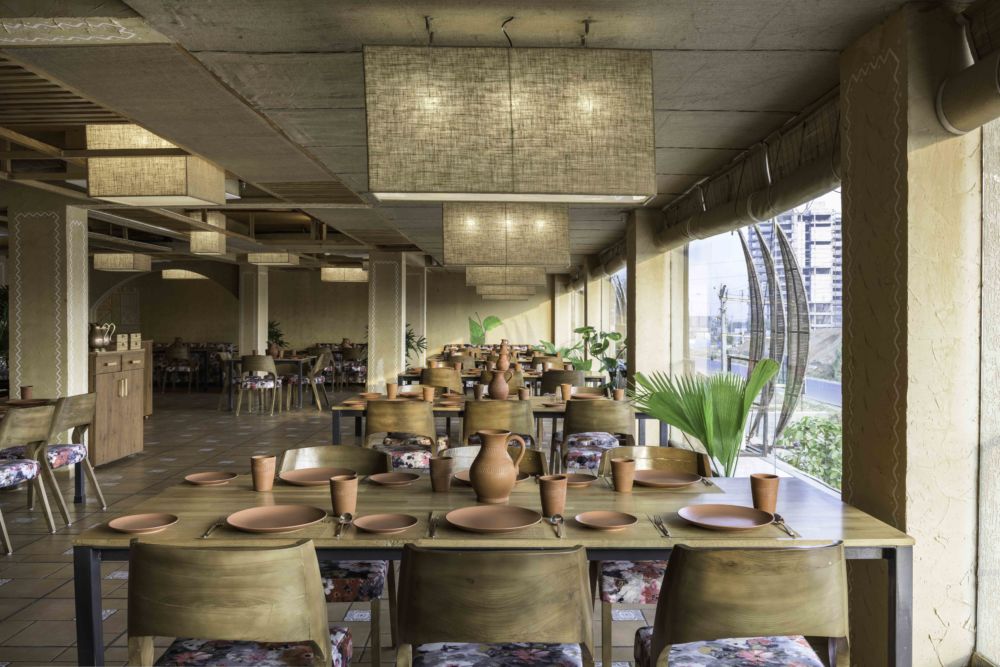
The hero of the entire narrative, undoubtedly, is clay. The mouldable, green, and versatile material is explored both, as a medium of creating objects as well as surfaces. Its combination with dye extracted from the flower of the kesudo (flame of the forest) tree, turmeric, grain husk, and a natural binder created a material distinct in color and texture, one that resonates with the theme and the spirit of the design. And thus, the name Mitti Ke Rang. The material development and research were done on-site, and the design team takes pride in the fact that no artificial pigment or additives were used in the process.
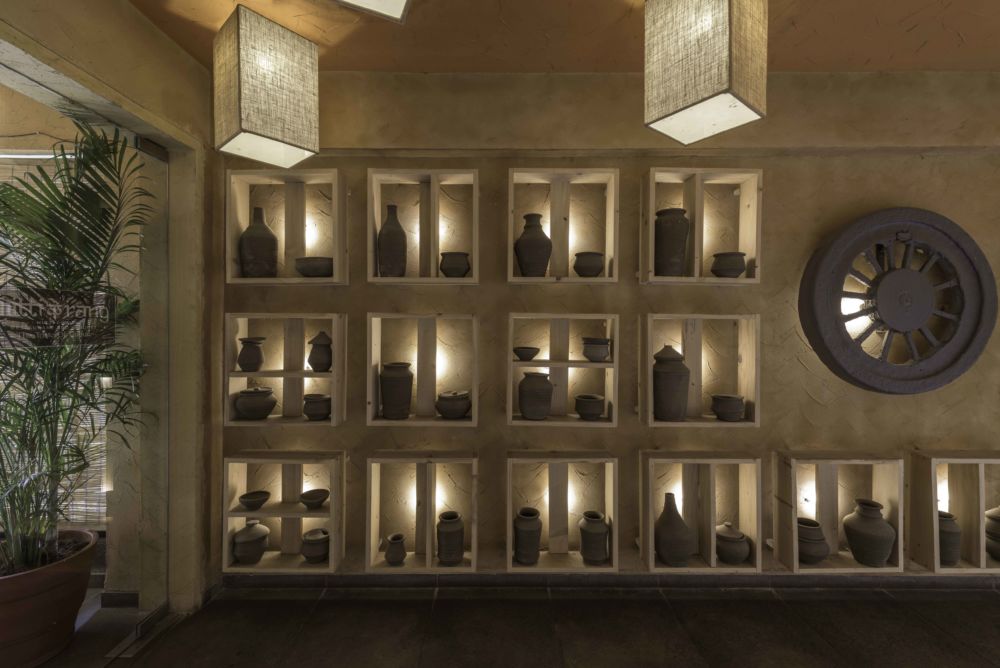
Both, the color and texture of this earth-friendly plaster celebrate India’s cultural wealth. The glorious golden shade, bearing associations with joy, health, positivity, and happiness, evokes auspicious moments and festive occasions, especially in the Indian context. The texture of the surface, with its beautiful handcrafted look and wave-like designs that trace the rhythm of hand movements, recalls simpler times when our connections to nature and the environment were much stronger.
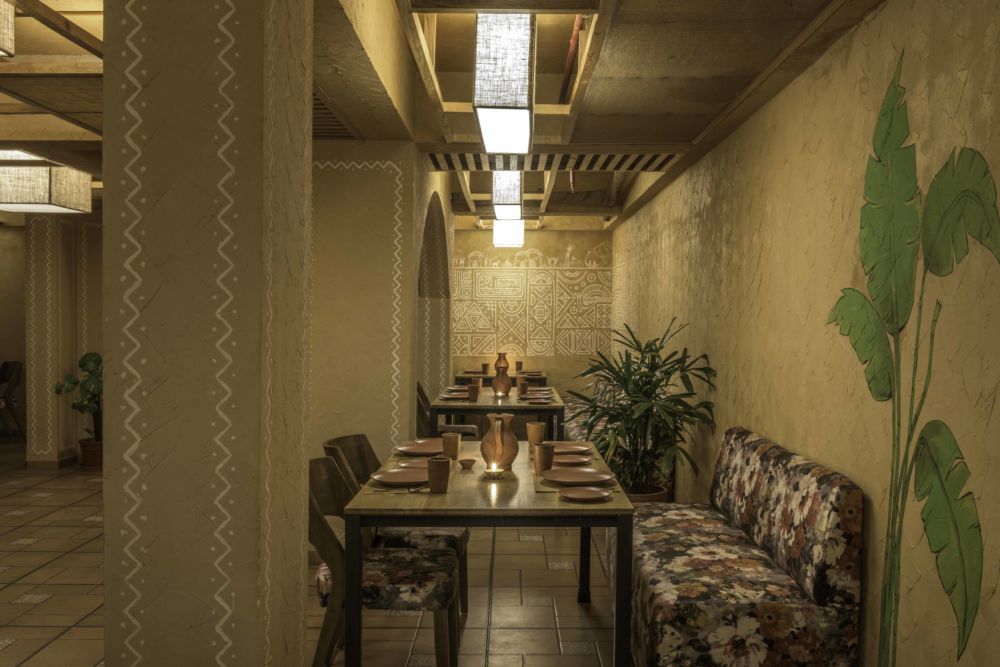
The expression of the central material is ably supported by reclaimed wood, reclaimed jute, unfired clay vessels, and terracotta tableware. These make the spatial narrative richer and more enjoyable, and at the same time convey the commitment to build with a respect for the place we inhabit resulting in Low embodied energy. “Awareness is a human quality,” states Bhadri Suthar, who co-helms the practice with her spouse. “But what you do with that awareness is important.”
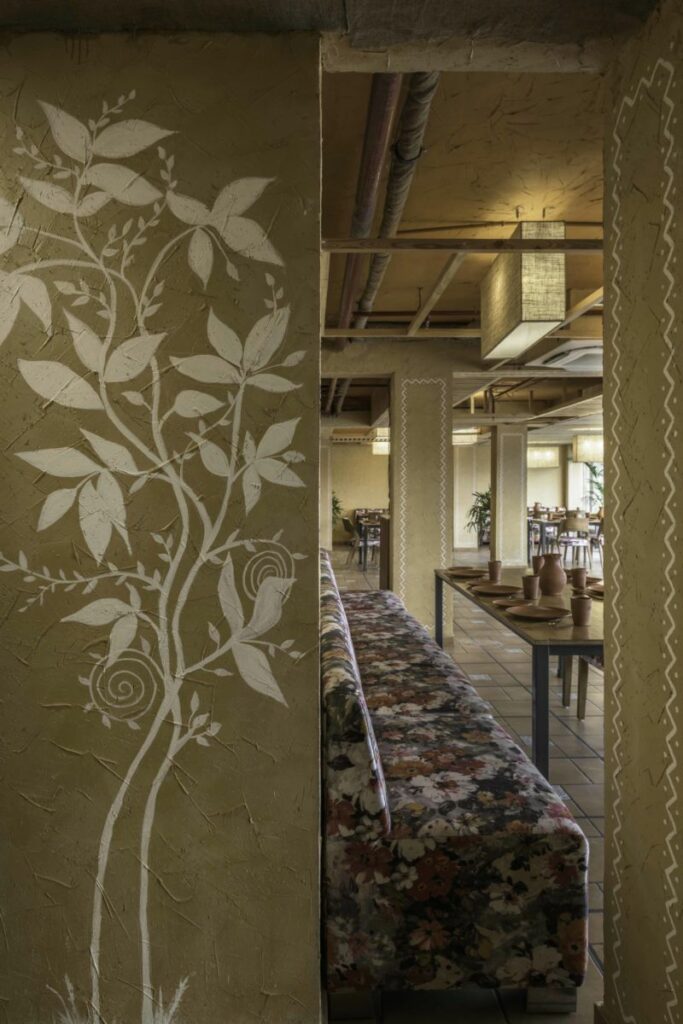
The design takes the route of simplicity, clean-lined forms, and uncluttered interiors. “An effortlessness that arises from a true and honest approach,” says Snehal Suthar, co-founder, and principal at tHE gRID Architects.
“The entrance symbolises the client’s heritage, our culture and the theme of the restaurant. A potter’s wheel and different types of clay vessels and utensils, gently illuminated by reclaimed jute-shaded lamps, extend a warm welcome. The waiting area and anteroom continue the tale of a cultural legacy by showcasing objects from the client’s ancestral home — notably a hand pounder/grinder, and the white and green pots.
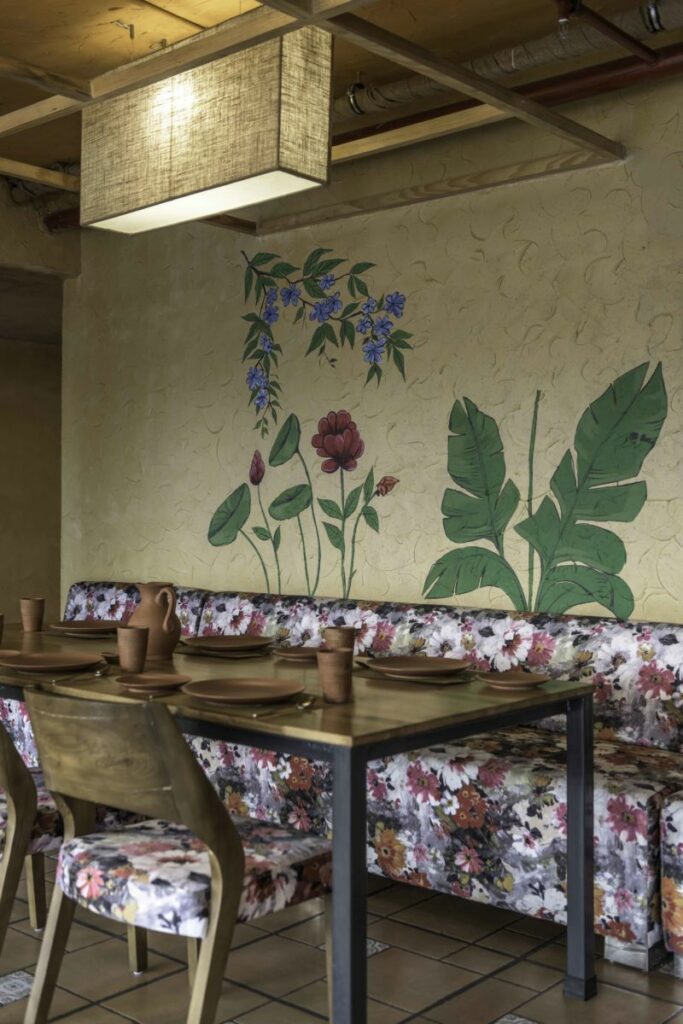
The linear programme inside is designed to parallel to the glazed, road-facing windows in order to leverage views and natural light. This animating force combines with earthy colours, subtle textures and the freshness of plants to create an energised experience that speaks of the well-being of both, the body and soul. Cosy seating islands with chairs and comfortable wall seating with sofas provide private, comfortable dining spots that are at once open, yet private. ”
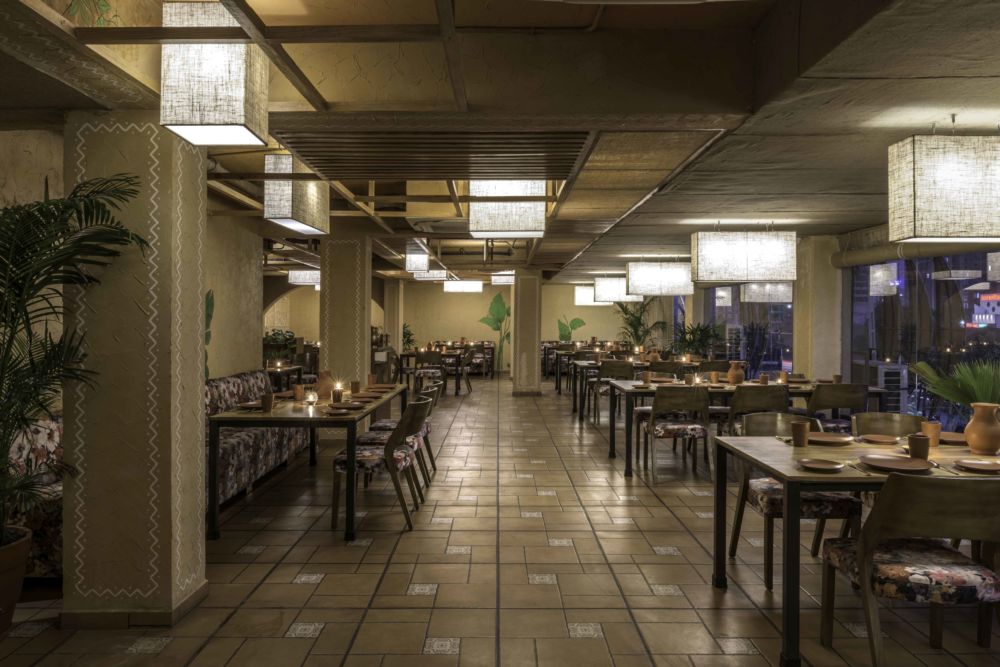
“This dine-in is designed to work in harmony with nature, and to trigger diverse sensations to encourage the visitor,” state the architects. “For instance, we hope that the person who experiences the space over time gets an idea about how the material will change color naturally with time, as well as through the way it reacts with light.”
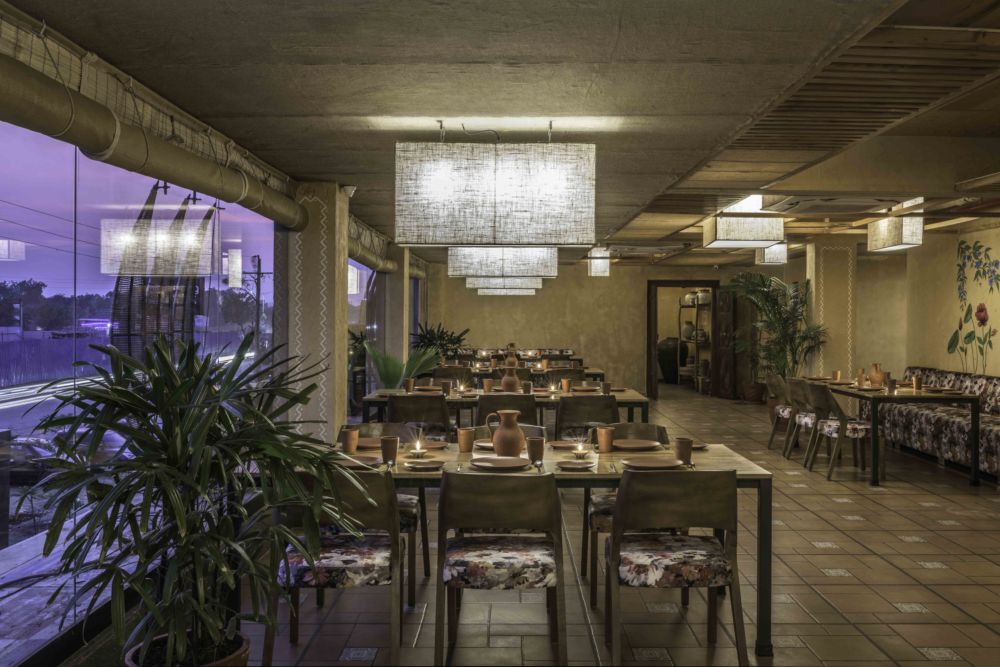
An abode that connects with nature through all senses and objects such as reclaimed jute lamps, furniture made from reclaimed wood, earthenware, and many other such elements, they triumphed over constraints posed by budget and a short timeline of 60 days, tHE gRID Architects have successfully delivered a space that is rooted to the earth and crafted from it…
Property Facts
Project – Restaurant
Name : Mitti ke Rang ( clay and colours of clay)
Built up Area : 3250 sq ft
Design Team : Snehal Suthar and Bhadri Suthar – tHE gRID Architects
Photo credits : Photographix India (Sebastian)



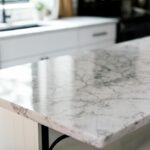
GIPHY App Key not set. Please check settings